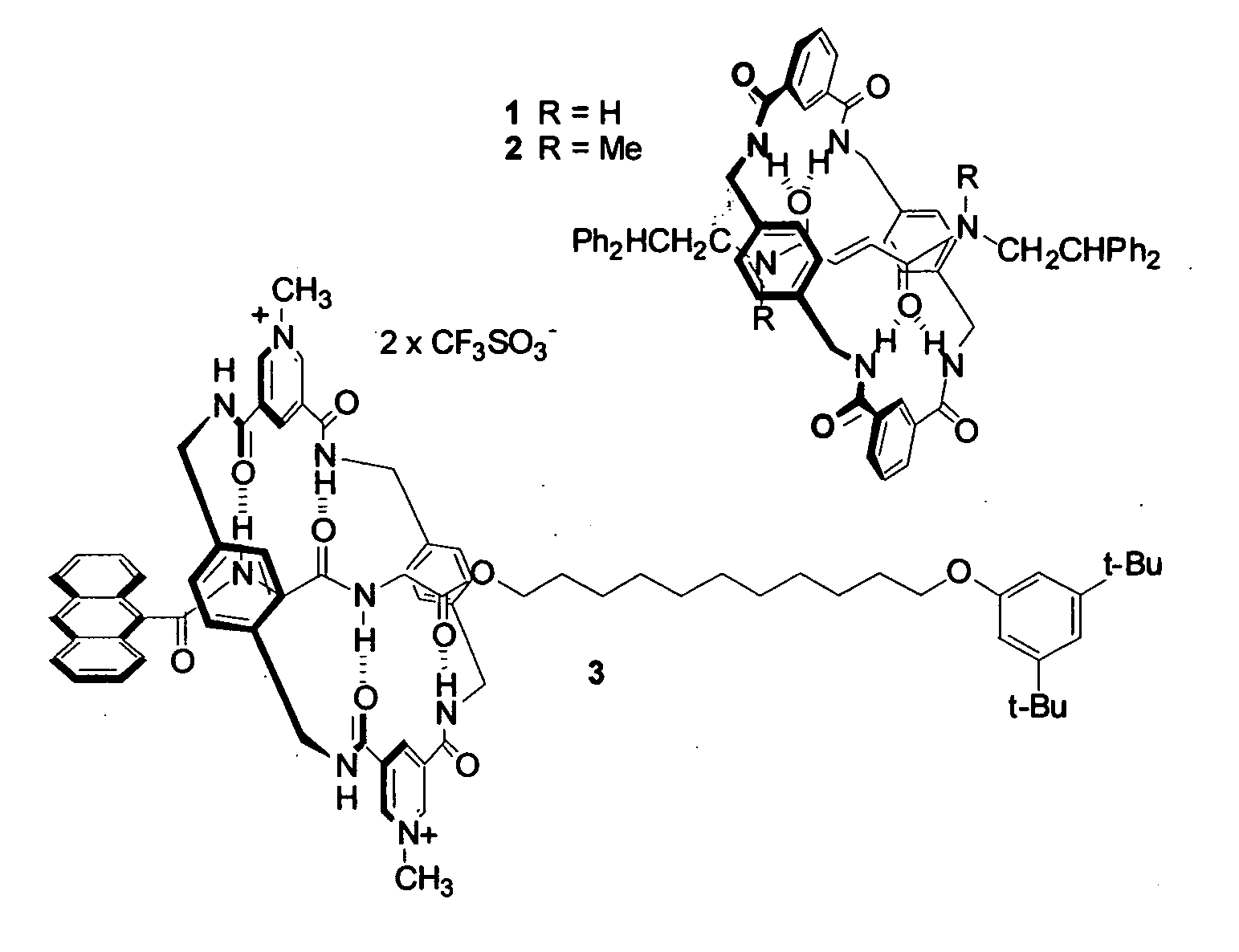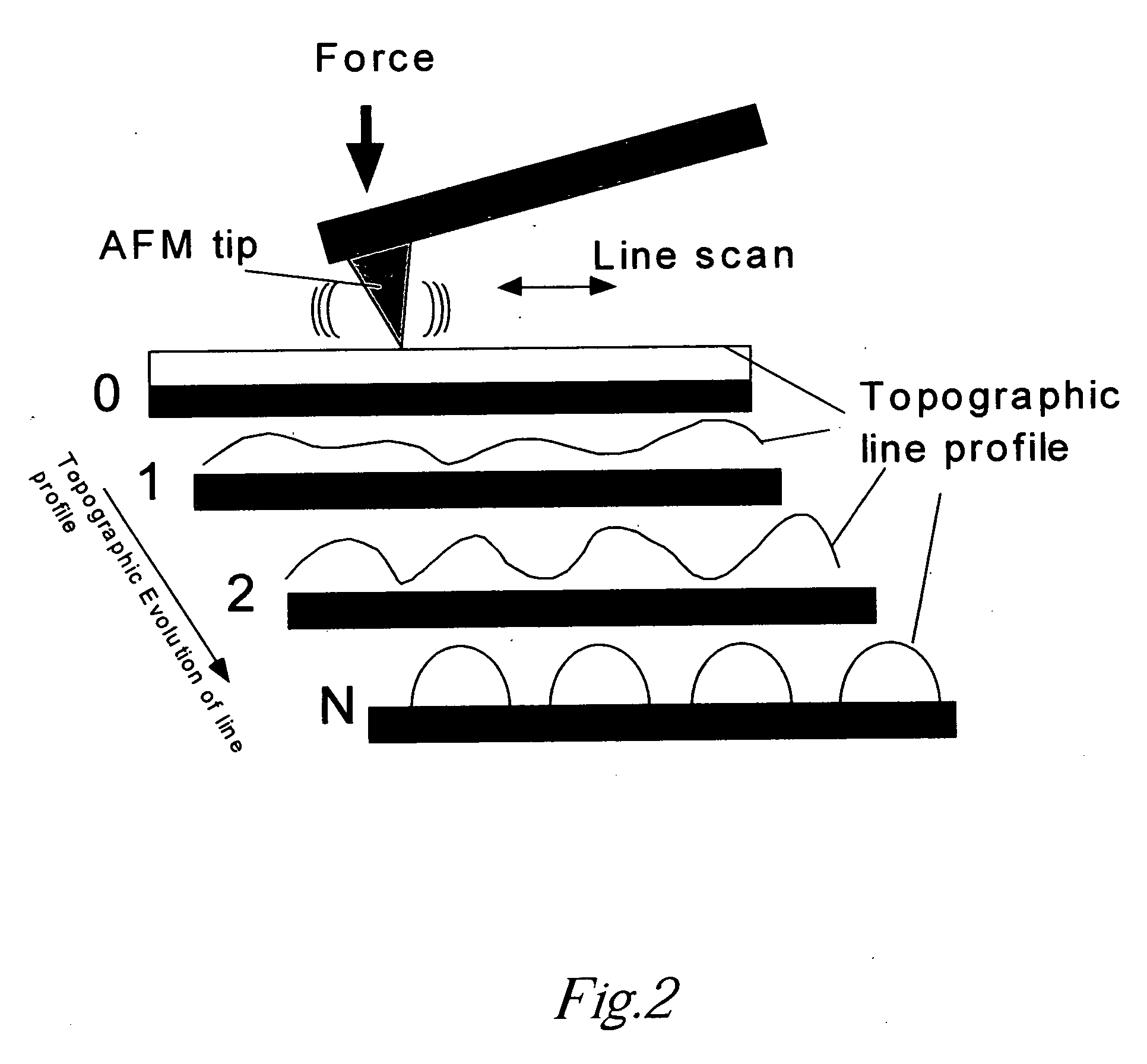Process for obtaining spatially-organised nanostructures on thin films
a nanostructure and nano-structure technology, applied in the field of spatially-organised nanostructures on thin films, can solve the problems of inability to erase dots, inability to achieve straightforward technological use, and excessive slowness of single probe spm, and achieve the effect of high areal density of dots
- Summary
- Abstract
- Description
- Claims
- Application Information
AI Technical Summary
Benefits of technology
Problems solved by technology
Method used
Image
Examples
Embodiment Construction
[0028] The present invention regards a new process that allows the formation of nanostructures by self-organization of bistable molecules, starting from an initially smooth and featureless thin film. The nanostructures are formed only when a local external perturbation, of well defined intensity, is applied. The nanostructures can be controlled and preset in number, size, distance, form. Such nanostructures with the said characteristics can be used to store information or other usages that will become clear in the following.
[0029] Storage information media can be obtained with the process of the present invention by obtaining of a thin film of bistable molecules, preferably taken from the class of rotaxanes. Rotaxanes consist of a molecular macrocycle locked around a molecular thread, that has two bulky groups, the stoppers, at both ends to prevent the macrocycle from slipping off the thread.
[0030] Examples of rotaxanes used to demonstrate the process are illustrated in the scheme...
PUM
| Property | Measurement | Unit |
|---|---|---|
| Length | aaaaa | aaaaa |
| Thickness | aaaaa | aaaaa |
| Force | aaaaa | aaaaa |
Abstract
Description
Claims
Application Information
 Login to View More
Login to View More - R&D
- Intellectual Property
- Life Sciences
- Materials
- Tech Scout
- Unparalleled Data Quality
- Higher Quality Content
- 60% Fewer Hallucinations
Browse by: Latest US Patents, China's latest patents, Technical Efficacy Thesaurus, Application Domain, Technology Topic, Popular Technical Reports.
© 2025 PatSnap. All rights reserved.Legal|Privacy policy|Modern Slavery Act Transparency Statement|Sitemap|About US| Contact US: help@patsnap.com



